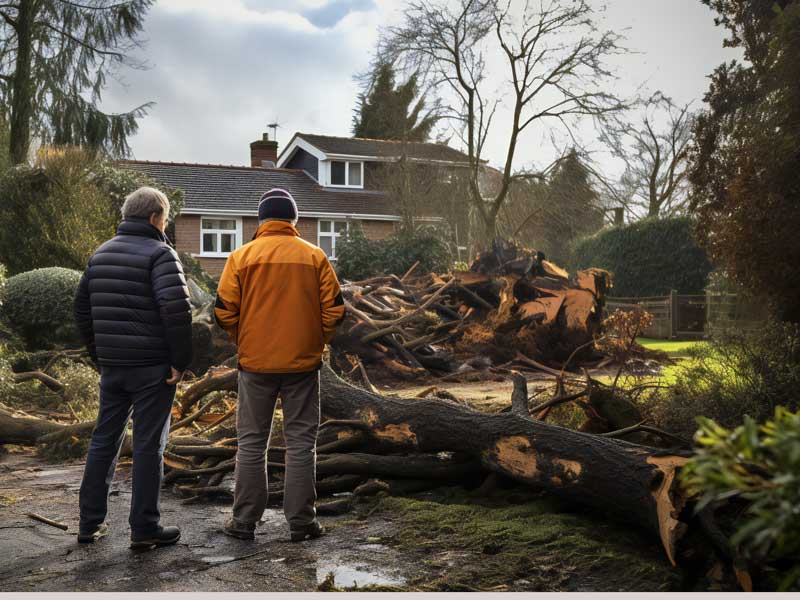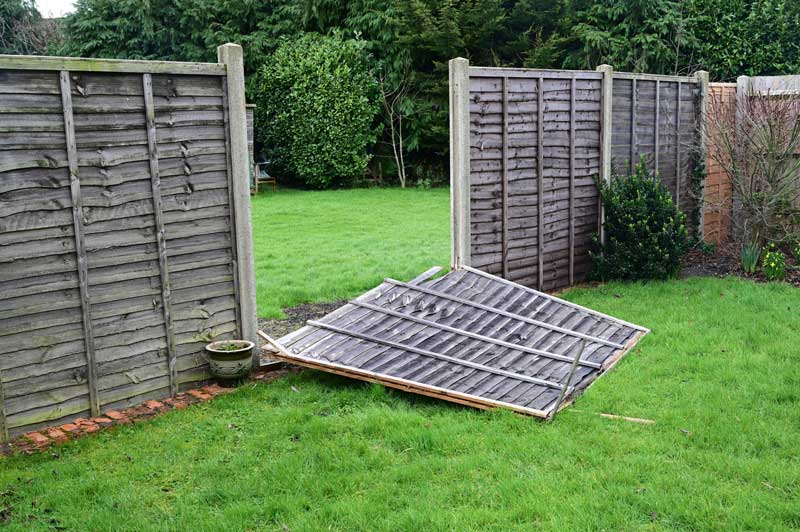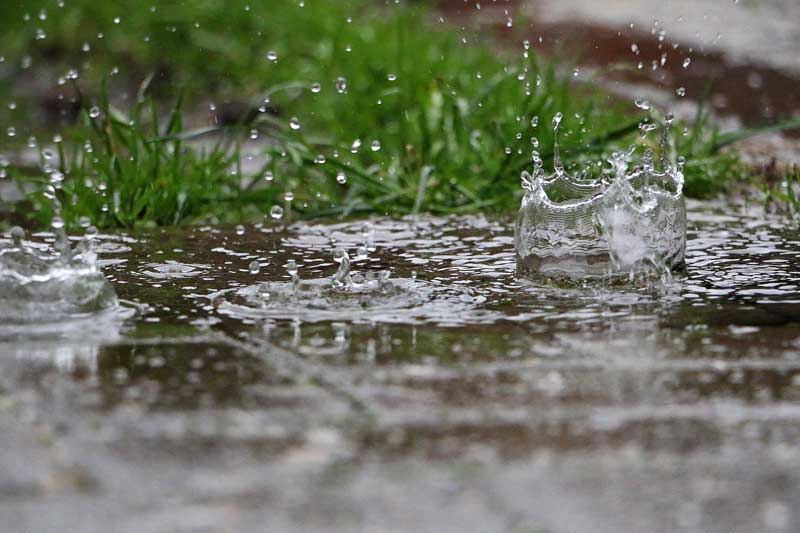
02 Nov Helping Your Garden To Recover From Storm Damage
Read Katie’s practical tips on helping your garden to recover from storm damage.
Storm Babet and Storm Cieran have devastated homes and gardens across Essex and Suffolk and our hearts go out to anyone who has been affected. As the flood waters subside and the wind drops, the true extent of the damage will be revealed and homeowners across East Anglia will be putting on their wellies to help their garden to recover from storm damage.
Here are some tips to help you break the work down into manageable chunks.
- Keep off lawns and flower beds until all the water has drained away. Stepping onto soggy soil will compact it. Compaction impairs, drainage, restricts air flow around roots and will dramatically affect the long term health of your plants.
- Start by assessing the damage and prioritising tasks.
- Hire professional help where there may be health and safety considerations.
- Dispose of debris responsibly.
- Turn a negative into a positive and take this opportunity to re-think the design of your garden.
Sheds, Greenhouses and Garden Buildings
Your first priority when helping your garden to recover from storm damage must surely be to make sure things don’t get any worse. Another spell of bad weather could easily create even more chaos. So before you worry about washing your patio or re-turfing your lawn, check that the major structures in your garden are still weatherproof.
Replace any missing or broken panes of glass on greenhouses and sheds. That way you’ll stop the wind getting inside the building and creating havoc. Check that shed roofs are secure and that all structures are still firmly attached to their base.
How did your fences hold up? Remove any flapping fence panels and temporarily repair the gap if you need to keep pets or children safe. Contact a good landscaper who will be able to replace your fence as soon as their workload and the weather allows.
Please don’t try to repair storm damage to fences greenhouses or sheds on a windy day – you need to stay safe!
 Trees
Trees
Are all of your trees standing strong? Don’t worry if there are twigs lying around. You can pick them up as soon as the ground is dry enough. If you are at all worried about the stability of any of the trees in your garden, please consult a qualified tree surgeon.
Fallen trees need careful handling. Again, get expert advice before wading in with your saw. And if you do decide to clear it yourself, be sure to wear PPE. That means, a hard hat, strong gloves, eye protection and safety boots as well as the correct leg and body protection if you are using a chainsaw.
Stacking the log and twigs in a quiet corner of the garden will make a great home for displaced wildlife and save you a trip to the tip.
Patios and Paths
If your hard landscaping was professionally installed, there shouldn’t be any major problems with it other than a bit of dirt and debris. Are all of the slabs still in position? No lumps, bumps or wobbly bits? That’s good. All you need to do is check that the drains are running freely and then get cleaning.
For paving and patios, start by sweeping soil, leaves and other debris into a pile and then shovel it onto another part of the garden or into your brown waste bin. Then wash the stone using a mild detergent in warm water. Use a broom to encourage the dirty water into the drains. Try to minimise water use – your garden is probably already saturated and doesn’t need any more liquid to cope with!
Artificial grass will benefit from a good clean up too. Use a specialised artificial grass cleaning rake to remove any debris and lift the pile. If your artificial grass is covered in silt, wash the worst of it off with a hose. Then, when the excess water has dispersed you can a proprietary art grass cleaner to disinfect the sward and get rid of any remaining nasties.
If your pavers or your artificial turf have been lifted or damaged by the storm, consult a professional landscaper to have them either repaired or replaced. Check your household insurance policy to see if you can claim back any of the costs.
Helping Lawns, Plants and Soil To Recover From Storm Damage
If your garden has been waterlogged by the storm, it’s likely that lawns and plants are looking sorry for themselves. At this stage of helping your garden recover from storm damage, keep off the soil for at least a fortnight. Let excess water drain away completely before you try to tidy beds and borders.
Herbaceous plants often become dormant in the winter months, so don’t worry if there is less greenery than usual. Roses should be pruned to reduce the risk of wind rock. And any climbing plants can be tied into their supports.
When it’s clear that your plants have suffered terribly and may not even survive, you have the perfect opportunity to work with one of our garden designers to create a more resilient planting display. Take a look at our planting to impress packages.
If soil has been washed away by rain, ask your landscaper about installing edging strips to stabilise the growing medium for the future.
Lawns will have suffered with all that excess water, especially if they are on compacted or clay soils. When the ground is firm enough to walk on, remove any autumn leaves, wayward twigs, toys and furniture, before applying a seaweed tonic to give the plants a boost.
Scarifying and aerating your lawn in spring will help it to recover from storm damage. If soil compaction is a problem for your lawn, invite a landscaper to replace your tired lawn with new turf. The procedure will improve soil structure so that it drains better and grows healthier grass.
Taking The Opportunity To Build The Garden Of Your Dreams
One way to help your garden to recover from storm damage AND future proof it against our changing climate, is to re-design the space and build the garden of your dreams. Yes, there will be a cost to it and no, you absolutely won’t regret it.
Book a garden design consultation with Katie to discover how your garden can recover from storm damage.
Contact Holland Landscapes for a quote to repair storm damage in your garden





 Trees
Trees
No Comments